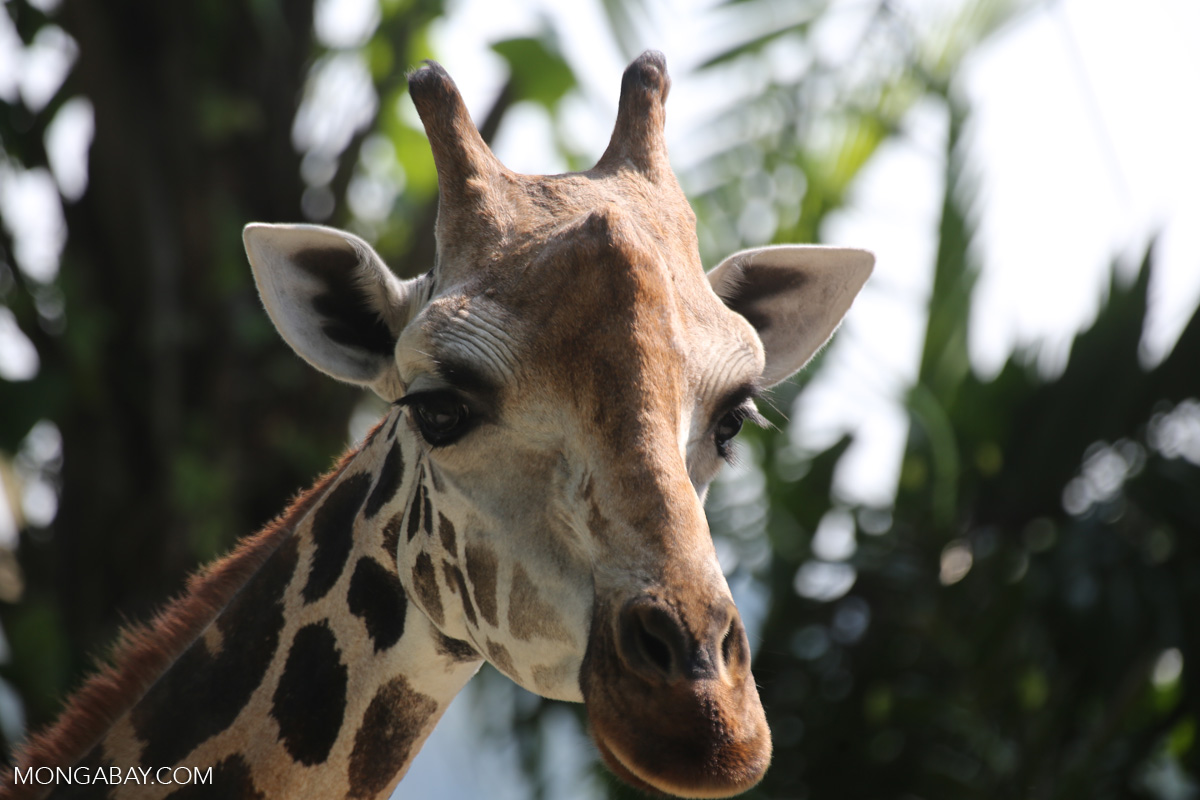- In December 2016, the International Union for the Conservation of Nature classified giraffes as “Vulnerable” to extinction.
- Giraffe numbers have plummeted since about 1985 from over 150,000 to about 97,000. Habitat fragmentation and destruction are the major causes of the decline.
- The decline in giraffes is due in part to importation to the U.S. of giraffe parts, including trophies, skins, and bone carvings.
Five conservation organizations filed a petition today with the United States Government to list the giraffe (Giraffa camelopardalis) as an endangered species. In December 2016, the International Union for the Conservation of Nature classified giraffes as “Vulnerable” to extinction. The classification was an umbrella covering all nine subspecies recognized by scientists and based upon the scientific data compiled by the Species Survival Commission Giraffe and Okapi Specialist Group, as reported earlier.

The Center for Biological Diversity, Humane Society International, Humane Society of the United States, International Fund for Animal Welfare, and Natural Resources Defense Council formed a consortium asking the Department of the Interior and the United States Fish and Wildlife Service to classify giraffes as a species threatened with extinction based on the criteria established by the Endangered Species Act. Giraffe numbers have plummeted since about 1985 from over 150,000 to about 97,000. Habitat fragmentation and destruction are the major causes of the decline.
However, as the petition notes, a substantial fraction of the decrease in number of giraffes in Africa is due to importation to the United States of giraffe parts, including trophies, skins, and bone carvings. According to the petition, a minimum of 20,000 bone carvings were brought into the United States for commercial purposes between 2006 and 2015. Bones tend to find their way into knife handles, while the blotchy fur is made into items like pillows and pistol cases.
According to federal laws, the government must decide within 90 days whether the petition “presents substantial scientific or commercial information indicating that the petitioned action may be warranted.” The initial decision does not mean that the species will be listed, but is only the first step in a lengthy process open to public debate and discussion. Should the government decide that the scientific and commercial evidence strongly reveal the substantial decline in population numbers of giraffes, then the process moves forward.
Of the nine subspecies of giraffes, four are decreasing in number, four are increasing in number, and one is stable, with the overall trend across Africa indicating that giraffes are in danger of extinction, should present trends continue. The fundamental reasons behind submitting the petition are to garner the support of the United States Government in officially acknowledging that the giraffe is an endangered species, which thereby subjects the species not only to specific protective measures, but also increases public awareness of the plight of this magnificent beast, the tallest mammal on Earth.
